Understanding the Importance of a Receptionist Cover Letter
In the competitive landscape of job applications, especially for roles like receptionist, a well-crafted cover letter is not just an optional extra—it’s your essential first impression. It provides an opportunity to go beyond the confines of your resume and demonstrate your personality, enthusiasm, and suitability for the role. Think of your cover letter as a carefully constructed sales pitch, designed to capture the attention of the hiring manager and convince them that you’re the perfect fit. Without a compelling cover letter, your application might get overlooked, regardless of your qualifications. It’s your chance to differentiate yourself from other applicants and showcase why you deserve an interview. This document is also a great way to highlight your strengths and explain any potential gaps in your employment history or qualifications.
What to Include in Your Receptionist Cover Letter
Crafting a winning receptionist cover letter requires careful attention to detail and strategic content. Your goal is to make a strong case for why you are the best candidate for the job. The following sections will outline the key elements that should be included. Make sure your cover letter is tailored to the specific job and the company. Generic cover letters often end up in the rejection pile. Before writing, thoroughly read the job description, noting the skills and experience the employer is looking for. This will help you tailor your letter to specifically address their needs and requirements. Make sure your cover letter contains the most important things to allow the hiring manager to consider you for a job, such as your contact information, hiring manager information, a compelling opening statement, relevant skills and experience, an expression of enthusiasm, and a call to action.
Your Contact Information
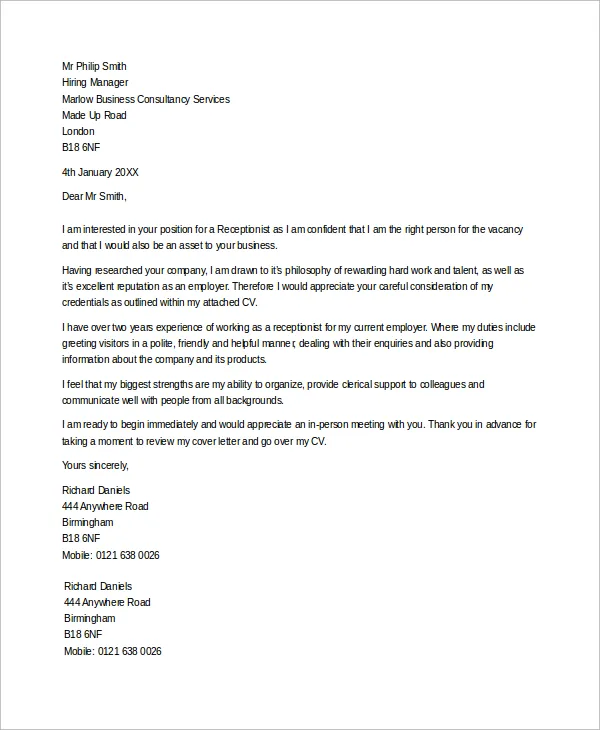
Begin your cover letter by including your contact information. This should be placed at the top of the document and include your full name, phone number, email address, and optionally, your LinkedIn profile URL. Ensure your contact information is accurate and professional-looking. A missing or incorrect phone number or email address can lead to missed opportunities. Always double-check for errors before submitting your application. Use a professional email address. Avoid using nicknames or unprofessional email addresses; something like ‘jane.doe@email.com’ is much better than ‘cutiepie123@email.com’.
The Hiring Manager’s Information
Next, include the hiring manager’s information. If possible, address the letter to a specific person. Research the company’s website or LinkedIn to find the hiring manager’s name and title. Addressing the letter to a specific person shows that you’ve taken the time to research the company and are genuinely interested in the role. This is more personal and significantly improves your chances of getting noticed. If you can’t find a specific name, you can use titles like ‘Hiring Manager’ or ‘Human Resources Department.’ Always include the company’s name and address as well. It’s an important part of a professional letter.
A Compelling Opening
Your opening paragraph is crucial; it’s your first opportunity to grab the hiring manager’s attention. Start with a strong statement that clearly states the position you’re applying for and how you learned about it. Briefly mention why you are interested in the role and the company. For example, you might start by expressing your enthusiasm for the receptionist position and mentioning the company’s reputation for excellent customer service. Keep it concise and engaging, setting the tone for the rest of your letter. Avoid generic phrases like ‘I am writing to express my interest’. Instead, aim for a more dynamic and personalized introduction that showcases your personality and passion for the role.
Highlighting Relevant Skills and Experience
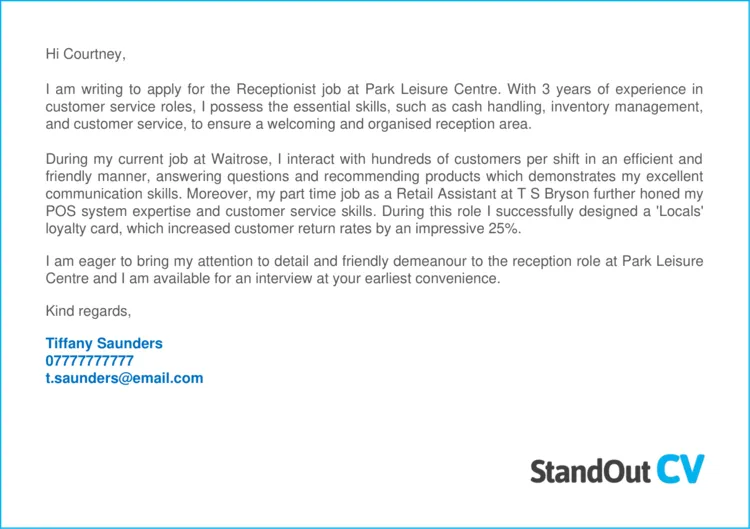
The body of your cover letter is where you showcase your relevant skills and experience. Refer back to the job description and highlight the skills and experiences the employer is looking for. Use specific examples to illustrate your abilities. This could include your experience with phone systems, scheduling appointments, managing correspondence, or handling customer inquiries. Tailor your examples to the specific requirements mentioned in the job description. If the job requires proficiency in a particular software or skill, make sure to mention it and provide evidence of your experience. This is the place to shine and show the hiring manager you’re the right fit for the job.
Showcasing Your Soft Skills
Receptionist roles require a strong set of soft skills. Showcasing these is essential. Highlight your communication skills, both written and verbal, your ability to multitask, and your customer service skills. Mention your ability to remain calm under pressure, resolve conflicts, and handle sensitive information. Use action verbs to describe your skills. Rather than saying ‘I have good communication skills,’ try ‘I effectively communicated with clients and colleagues to resolve issues.’ Mention how you used your communication skills to resolve a customer’s complaints or to explain a difficult subject to a client. Also, include examples of your ability to organize and multitask, such as managing multiple phone lines and greeting visitors simultaneously.
Quantifying Your Achievements
Whenever possible, quantify your achievements with numbers and data to make your accomplishments more impactful. This could include the number of calls you handle per day, how you improved customer satisfaction scores, or how you streamlined office processes. Use numbers to demonstrate the impact of your work. For example, you might say, ‘Reduced customer complaints by 15% by implementing a new customer service protocol.’ Or, ‘Managed an average of 50 calls per day while maintaining a high level of accuracy’. Quantifiable results provide concrete evidence of your capabilities and demonstrate the value you can bring to the role. Such examples are an efficient way to let the hiring manager know about your achievements.
Expressing Enthusiasm for the Role
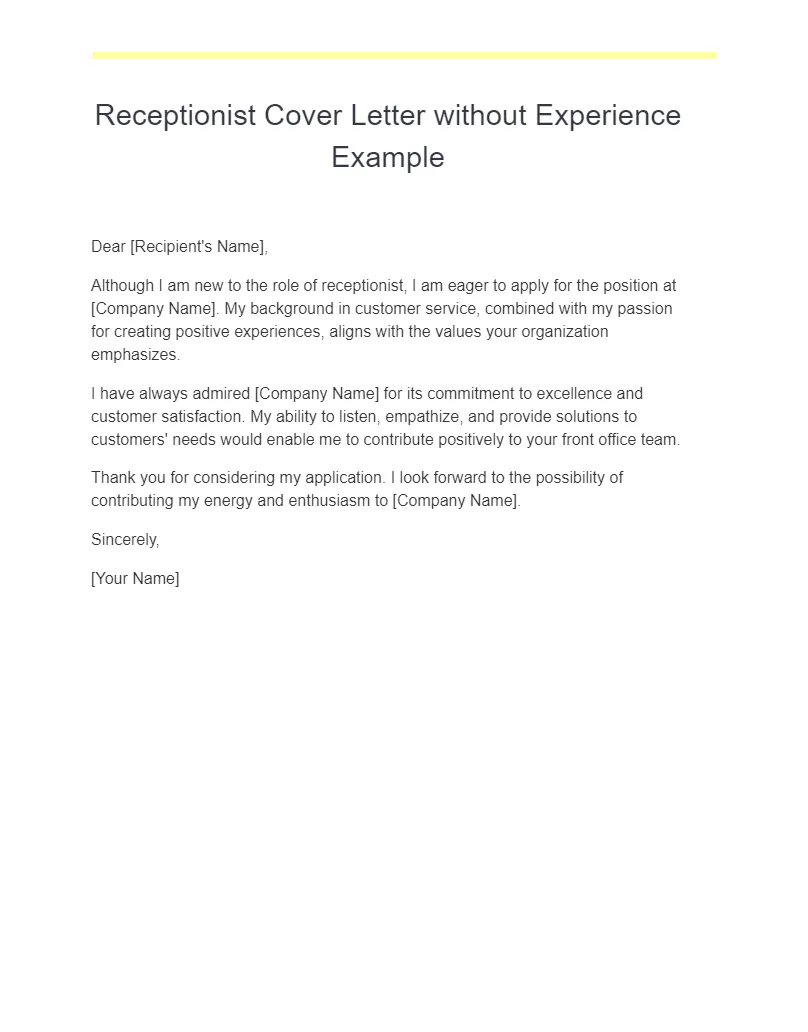
Expressing genuine enthusiasm for the role and the company is essential. Explain why you are interested in this specific position and what excites you about the opportunity. Research the company and mention specific aspects of its culture, values, or mission that resonate with you. Showing that you’ve done your homework and are genuinely interested in the company demonstrates your commitment and increases your chances of being hired. Explain how your career goals align with the company’s objectives. Avoid generic statements and show that you are genuinely excited about the chance to contribute to the company. Show that you want to be part of their team.
A Strong Call to Action
Your closing paragraph should include a clear call to action. Thank the hiring manager for their time and consideration. Reiterate your interest in the role and express your availability for an interview. Provide your contact information again, just in case it gets separated from the rest of your application. For example, you might write, ‘Thank you for considering my application. I am eager to discuss my qualifications further and can be reached at [your phone number] or [your email address]. I look forward to hearing from you soon.’ End on a positive note and reiterate your excitement about the opportunity. This ensures the hiring manager remembers you and encourages them to take the next step.
Formatting and Tone
Formatting and tone are critical aspects of your cover letter. The appearance and style of your letter can significantly influence the hiring manager’s perception of you. Poorly formatted or inappropriately toned letters can lead to immediate rejection, even if your qualifications are strong. The goal is to present a professional, polished document that is easy to read and conveys your enthusiasm and suitability for the role. Follow these tips to optimize the visual appeal and content of your letter.
Formatting Your Cover Letter
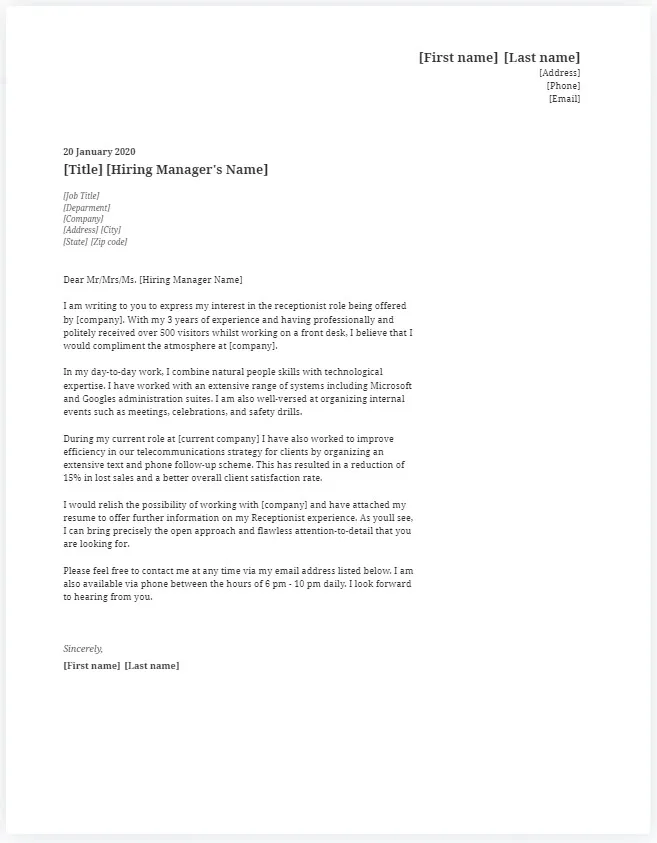
The visual appearance of your cover letter is important. Use a professional font such as Times New Roman, Arial, or Calibri, with a font size between 10 and 12 points. Ensure consistent formatting throughout the document. Use single spacing within paragraphs and double spacing between paragraphs. Use left alignment, which is the standard, and avoid using justified alignment. Break up large blocks of text into smaller paragraphs to make the letter easier to read. Use bullet points to highlight key skills or achievements, if needed. Make sure your document is well-organized, clean, and free from distracting elements. A visually appealing cover letter shows attention to detail and professionalism.
Maintaining a Professional Tone
Maintain a professional and respectful tone throughout your cover letter. Use formal language and avoid slang, jargon, or overly casual expressions. Proofread carefully for grammar and spelling errors; these can significantly damage your credibility. Use a positive and enthusiastic tone, but avoid being overly familiar or presumptuous. Be confident in your abilities, but avoid arrogance. Focus on what you can offer the company and how you can contribute to their success. Tailor your tone to the company’s culture. If the company culture is formal, your cover letter should reflect that. If it’s more relaxed, you can adjust your tone slightly, but always maintain professionalism.
Proofreading and Editing
Proofreading and editing are non-negotiable steps in the cover letter writing process. Errors in grammar, spelling, and punctuation can create a negative impression and undermine your credibility. Before submitting your cover letter, carefully proofread it for any mistakes. Use a spell checker and grammar checker, but don’t rely on them completely; these tools can miss subtle errors. Read your cover letter aloud to catch any awkward phrasing or typos. Ask a friend, family member, or career advisor to review your cover letter for a fresh perspective and to identify any errors or areas for improvement. A second set of eyes can often catch mistakes that you may have missed. Ensure your cover letter is error-free and polished.
Common Mistakes to Avoid
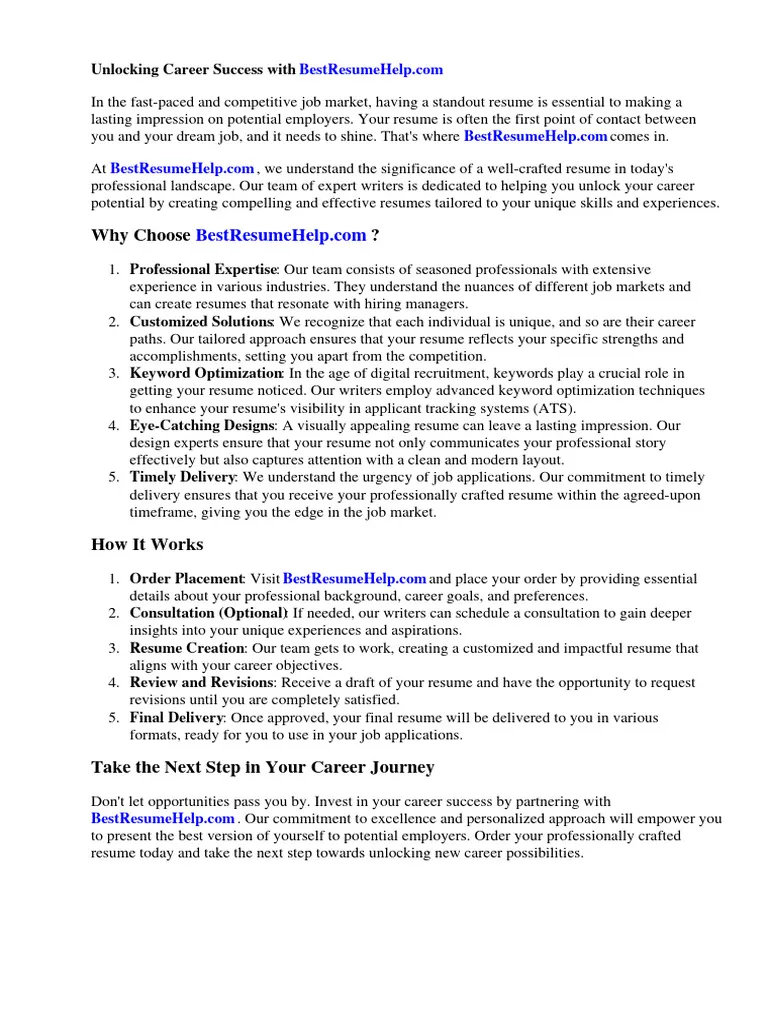
Certain mistakes can significantly diminish your chances of getting hired. It is important to be aware of these pitfalls. Make sure your cover letter does not fall into the common errors that could cost you the job. Carefully avoid the following things.
Using Generic Language
Using generic and vague language makes your cover letter less impactful. Avoid using clichés and overused phrases that don’t provide any specific information about your skills or experience. Instead, use specific examples and action verbs to demonstrate your capabilities. For example, instead of saying ‘I am a good communicator,’ write ‘I effectively communicated with clients and colleagues to resolve complex issues.’ Using specific examples of your work makes your cover letter more compelling and memorable.
Focusing Solely on Yourself
While it’s important to highlight your skills and experience, avoid making your cover letter all about yourself. Instead, focus on how your skills and experience align with the needs of the employer. Show the hiring manager how you can contribute to the company’s success. Always consider the employer’s perspective and emphasize the value you can bring to their organization. Explain how your skills and experience can help solve their problems or achieve their goals. Demonstrating how you can benefit the company will significantly increase your chances of being hired.
Ignoring the Job Description
Failing to tailor your cover letter to the specific job description is a major mistake. The job description provides a clear outline of the skills and qualifications the employer is seeking. Always read the job description carefully and tailor your cover letter to address the specific requirements. Highlight your relevant skills and experiences using the keywords and phrases from the job description. By directly addressing the employer’s needs, you show that you understand the role and are a good fit for the company. If the job description mentions proficiency with a particular software or skill, make sure to emphasize your experience in that area. Ignoring these details makes your cover letter generic and less appealing.
Receptionist Cover Letter Examples
Reviewing receptionist cover letter examples can give you ideas and inspiration. Look for examples that match the specific type of receptionist role you’re applying for, such as medical, corporate, or administrative receptionist positions. Adapt the examples to fit your own skills and experiences. Pay attention to the structure, tone, and language used in the examples. Use the examples as a starting point for crafting your cover letter, but always customize it to reflect your unique qualifications and the specific requirements of the job. Focus on highlighting your skills, experience, and enthusiasm for the role. A well-written cover letter can make you stand out from the competition and land you your dream job.
